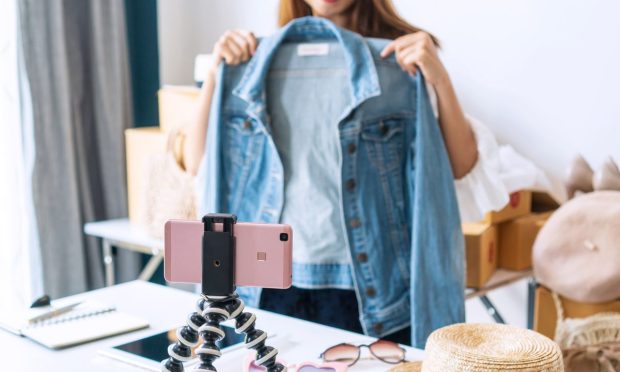Beyond Likes, Social Commerce Potential and Pitfalls Reach New Heights

Liking a post on social media. That’s so last year, or so people will perhaps be saying, once 2022 is officially underway.
This as 2021 has been a year where middle-aged social media platforms took some interesting risks (like deleting the “like” button) and in doing so are set to possibly change how users engage and create content.
Indeed, social media involves lots of eyes and interactions. It generates a ton of global traffic, but just how much? Earlier this year, the number of reported monthly active Instagram users crossed the 2 billion mark. Similarly, the most visited website of the year wasn’t Google, but the relatively young upstart TikTok which now hosts over 1 billion reported users each month.
Clearly, social media’s consumer rapport and loyalty are here to stay at a massive global scale, but the way forward in this burgeoning corner of commerce will be filled with innovation and efforts to delicately differentiate and evolve without sinking the ship so to speak.
On that note, some notable social media developments are already unfolding that will have big future ripple effects, and could be the precursors to what inevitably will spawn the next TikTok, seemingly out of thin air.
Meta and the Metaverse
Facebook got even more digital in 2021 to generate revenue at scale. The company renamed itself Meta, a move designed to showcase the company’s transition into the metaverse. To do so, Facebook closed a deal to the tune of $60 million to buy Meta Financial Group’s trademark assets. As PYMNTS reported, Meta has dipped its toe into the cryptocurrency world and even tried to make a digital coin specific to people using WhatsApp and Facebook. Earlier this month, Meta tested this coin out by allowing some people to send and receive money using it.
Last March, Meta announced work to ensure content creators make money in new ways, such as through connecting them with personalized marketplaces that align with what interests a creator’s target audience. Imagine watching someone’s Instagram Live and then having it be interrupted with an ad, or having an influencer start selling a product while people are tuned in in real time. On that note, Meta also announced new services such as where creators would be able to monetize live presentations via livestream advertising.
This news is important because when larger companies get into undeveloped realms (like the metaverse), it generates buzz. More companies are likely to at least consider the metaverse, too, because those like Meta took initial interest — and action.
The most recent adoptee of the metaverse opportunity is fast fashion retailer Forever 21, which is pinning part of its reinvention on having a prominent placement in the land of make-believe.
How this all transpires is yet to be determined, but this new direction and trend is one other companies will likely investigate or at least have on their radar as something to understand and get to know better in terms of if it’s a risk or a reward in the end.
Tackling the Art of ‘Ready? Set? Action!’ Advertising
Twitter and TikTok became key elements of content and marketing strategy this year amid increased efforts to drive business and build trust, especially among young digitally native consumers.
Enter the livestream ad. Walmart, for instance, planned over 30 end-of-year livestreams with other social media platforms such as Twitter and YouTube to cross-promote ads at a global scale. Live, dynamic, and immersive advertising — kind of like the Blade Runner movie where holograms come out of thin air to sell products you didn’t know you needed — took hold this year.
Or take TikTok, for instance, now expanding into the (virtual) restaurant business.
As much as all of this social commerce is built upon instantaneous connectivity and seamless transactions and has earned a reputation for shortening attention spans, it would be a mistake to underestimate the unique demand this medium places on brands to be authentic and transparent.
Engagement between content creators and fans/customers during live streams is key, and different than anything seen before, as evidenced by the emergence of the virtual tip button to reward someone during their presentation. One can only imagine what the TV infomercial icons of yore would have done with such a tool had it been available decades ago.
All of these examples matter, because they point to a new kind of advertising where the person behind the brand is not just someone consumers already know, admire and trust, but is now also someone they can text.
The modern influencer can promote different kinds of products and services — ideally, ones tied to their lifestyles and beliefs so consumers feel the transaction and information is authentic versus forced for the sake of making money off a sponsorship.
Like the art of product mix and pricing, the challenge for brands will be to find the right mix of talent — both known and unknown — to represent them online and literally “click” with their audience. For those who get it right, the sky’s the limit. For those who get it wrong, viral shaming or “cancel culture” ruin await.
